In late summer and early autumn we received two big news. One was the release of Sony Xperia Z5 Premium (see the look of the Sony interface revealed in Android 6.0 Marshmallow), the other one, the release of Samsung Galaxy Note 5.
It is difficult to reach a conclusion by comparing terminals with such good performance, so details and prices will be those details which will decide the purchase. The Sony Xperia Z5 Premium is noted for being resistance to water and dust. The Samsung Galaxy Note 5 would be the incorporation of Stylus or Samsung's own interface.
Design
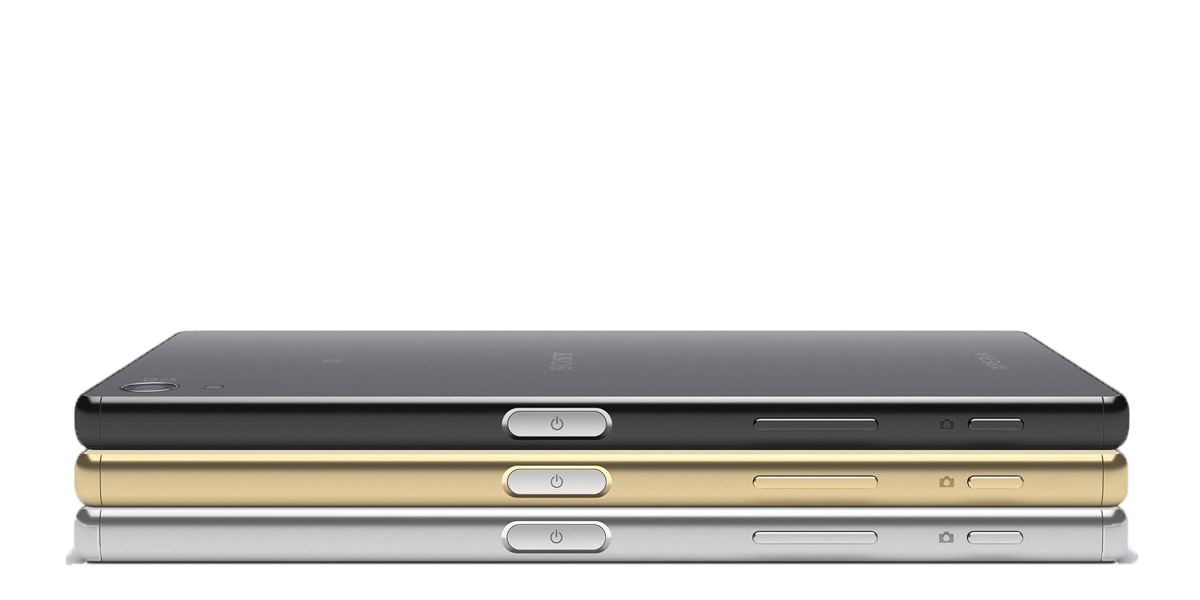
Sony retains its traditional design line. The Sony OmniBalance shows little innovation in this Xperia Z5 Premium. It does not change much compared to the other five series smartphones. The most significant changes are in the left side as on the edge has been incorporated the Xperia logo, while the right side traditional power button has changed and has been incorporated into the fingerprint scanner.
Samsung has opted to give the Galaxy Note 5 a similar design of the Samsung Galaxy S6. The similarities between the two phones are obvious at first glance, the fake leather and plastic have been left aside. The Note 5 has a shiny appearance with an aluminum frame and sheet glass Gorilla Glass on the part of both front and rear parts. The most striking element of this device is the curve on the back, which makes it look like a Samsung Galaxy S6 Edge+ turned upside down, with the camera sensor protruding slightly, as did the previous flagship of Samsung. But with the new design it has also lost some of the basic aspects of the saga, as microSD slot, which no longer exists in this model. Nor it has removable battery.
Display
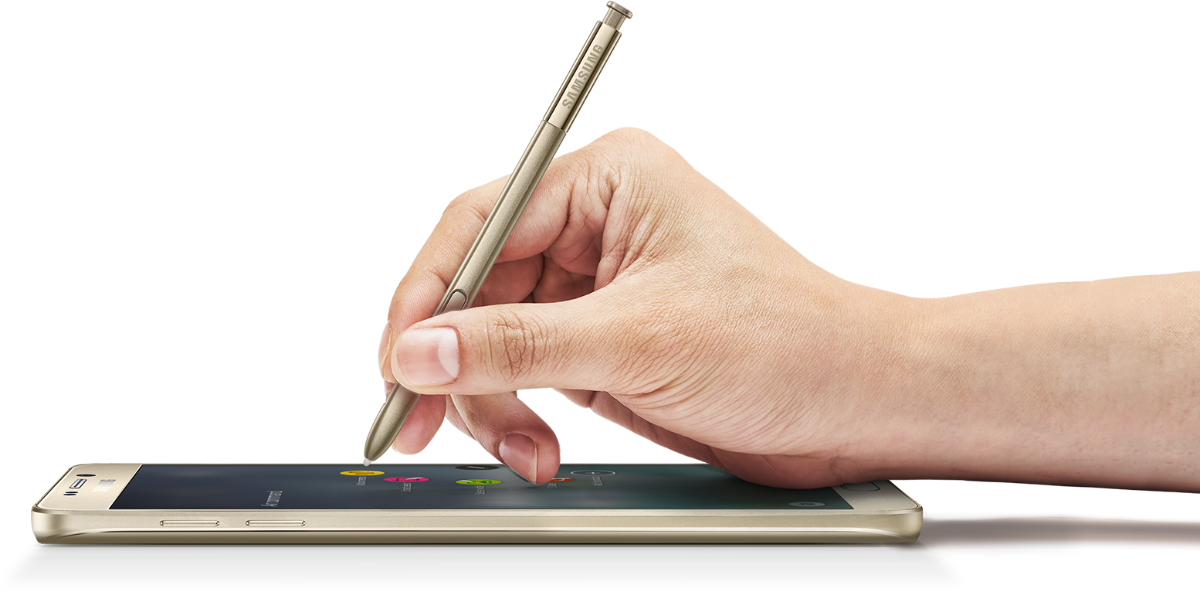
In this section we find more differences because of the different resolutions on each screen, as each has a different dimensions. The Note 5 has a QHD screen of 5.7-inch with resolution of 2560 x 1440 pixels and Z5 Premium has a screen of 5.5 inches, 4K UHD resolution of 3840 x 2160 pixels. The pixel density of the Z5 Premium has a smaller screen, but with a much higher resolution. Probably using a 4K screen to a size of 5.5 inches is probably overkill and consume more energy than the Samsung Galaxy Note 5, however, Sony clarified that only offer 4K images in album and video applications (totally logical, as we do not need to see images in 4K while chatting). As for Samsung, having a QHD resolution is a wise decision for this fairly large screen, but part of the pixel density is lost.
Camera
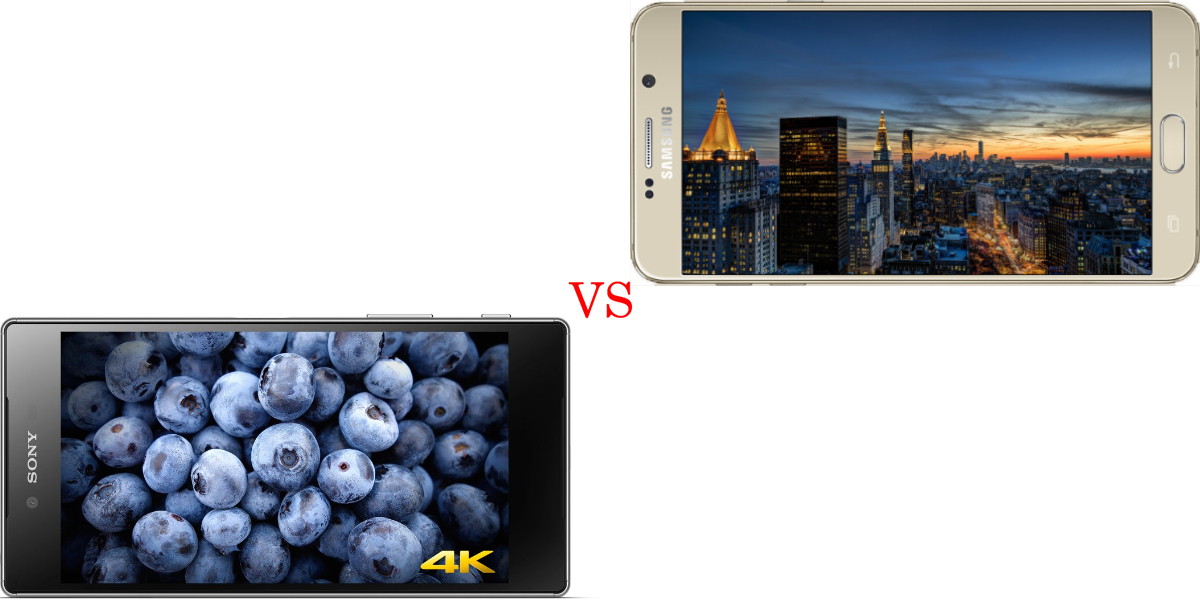
In the section of the cameras of each terminal, if we go straight to the point, we could emphasize that the Z5 and Note 5 provide great images. The Z5 Premium provides a sensor with more megapixels (something not always mean it is higher quality camera) and hybrid approach, however, the Note 5 comes with image stabilizer. Actually both terminals will provide us photographs of incredible quality, so it is difficult to opt for one of the two, but if you have to choose, Sony is probably the best (as they are expert in this).
Software/Hardware
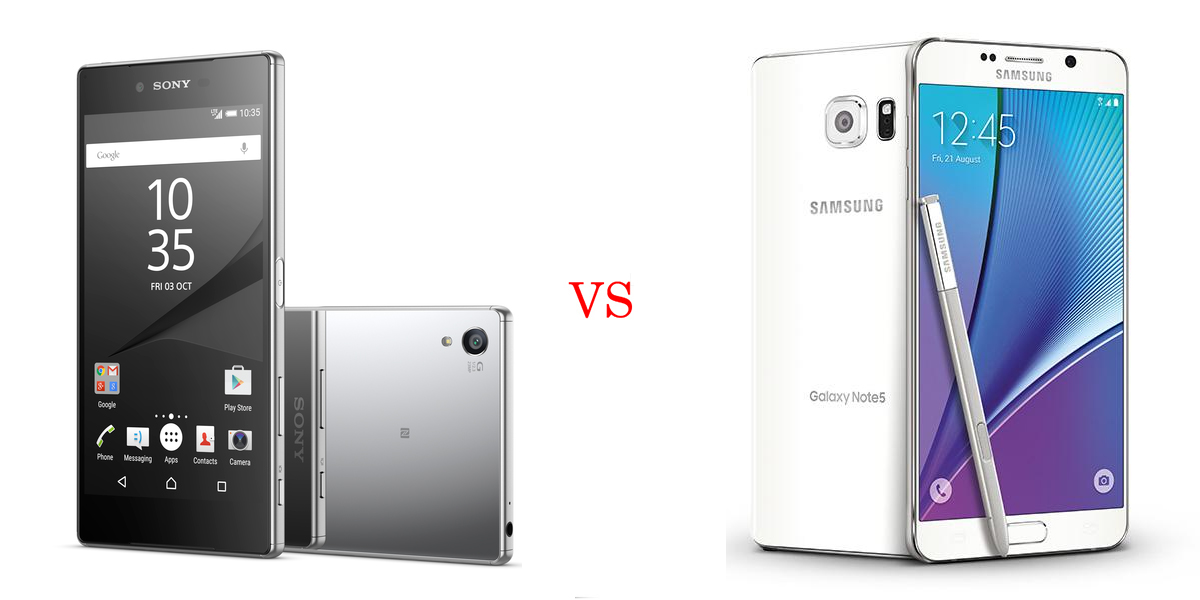
In recent years the monopoly of Qualcomm processors had gone dissipating, as more and more different terminals mounted processors from other manufacturers. The example is seen that none of these two smartphones has the same. If we stick to the data obtained by the performance test, the Exynos (Samsung Galaxy Note 5) far exceeds the performance of the Snapdragon 810 (Sony Xperia Z5 Premium), but at these levels of quality will not be very a noticeable difference in performance between devices, unless you bring them to the end. In comparison we see the Sony with 3 GB of RAM while the Samsung has 4 GB, which will allow to carry out major tasks simultaneously (in addition to carrying a more powerful processor).
As for the internal storage, the Note 5 does not include SD card, something that deducts points. But if we opt for the 64 GB capacity we will not have problems (with 32 GB not have many problems too). Sony has performance problems and overheating because of the Snapdragon 810 and may decrease the autonomy (in addition to show a 4K screen).
Autonomy
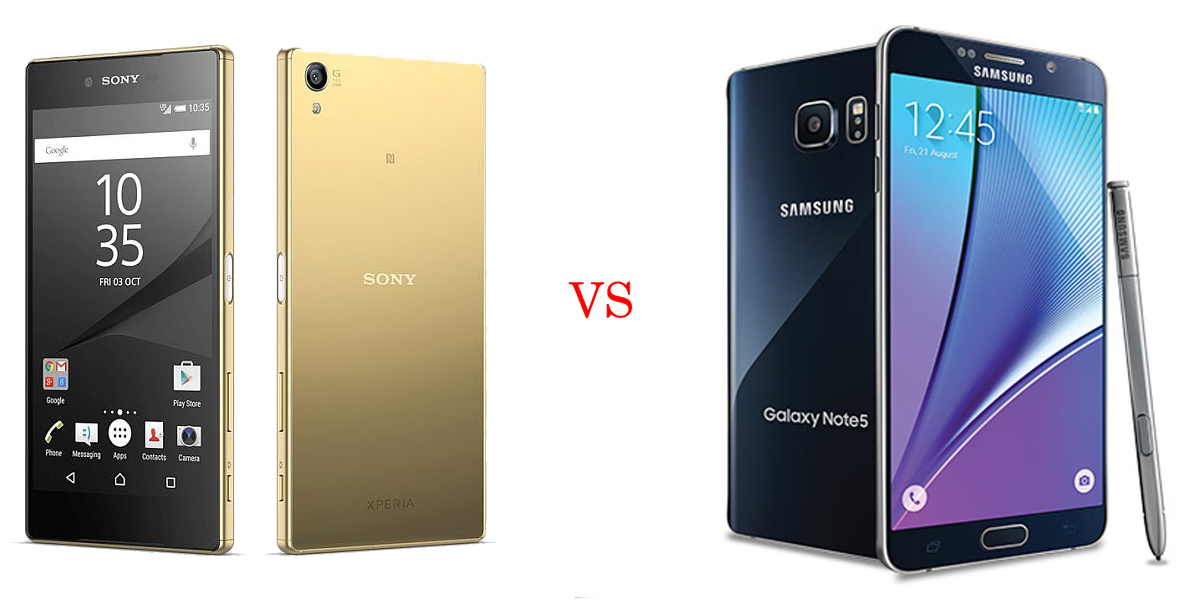
Sony claims that all models of the Xperia Z5 line last more than two days. The size is maintained, staying at 2900 mAh. We also find classic modes battery saving. Sony has integrated very well the hardware and software for a good range that extends up to 48 hours for moderate use. However, there are exceptions in energy consumption and recording at 4K resolution, which accelerates the pace of consumption. The two modes, Stamina and Ultra Stamina are available. In addition, the device features fast charging technology by Qualcomm. The downside is that the Xperia Z5 Premium does not support wireless charging.
The non-removable battery of the Note 5 has a capacity of 3000 mAh, a fairly significant cut when you consider that its predecessor brought a battery of 3220 mAh and also allowed to replace the battery. However, the results end up being slightly better in this new version, although not as good as other smartphones in its category. Even its partner, Samsung Galaxy S6 Edge+ is able to give a better result for the battery of Note 5.
Sony Xperia Z5 Premium versus Samsung Galaxy Note 5